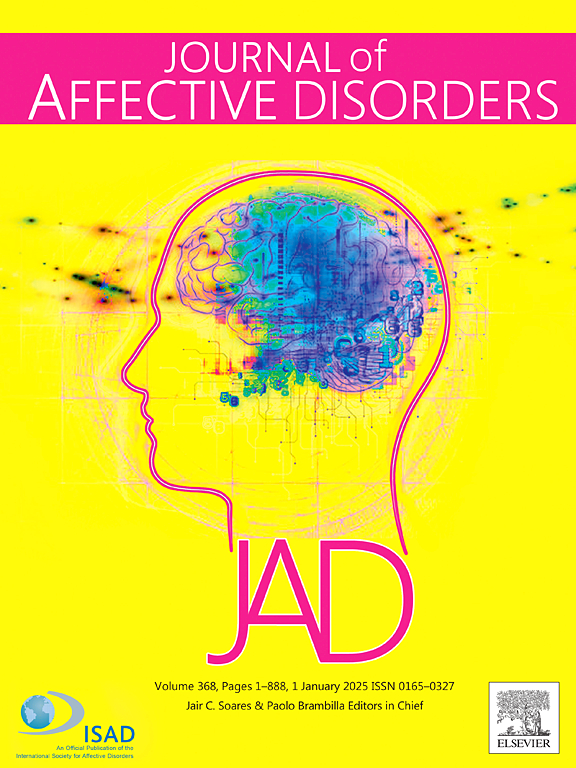Exploring mental health literacy on twitter: A machine learning approach
IF 4.9
2区 医学
Q1 CLINICAL NEUROLOGY
引用次数: 0
Abstract
Objectives
This study investigates whether reducing mental illness stigma, enhancing help-seeking efficacy, and maintaining positive mental health mediate the relationship between the recognition of mental disorders and help-seeking attitudes.
Methods
During annotation phase, Twitter were collected data from April to August 2022. Tweets were retrieved using keywords aligned with five mental health literacy (MHL) facets: maintaining positive mental health (M), recognizing mental disorders (R), reducing mental illness stigma (S), help-seeking attitude (HA), and help-seeking efficacy (HE). A pretrained Sentence-BERT model generated embedding vectors for classification tasks, achieving 0.85 precision and 0.88 accuracy. Tweets from November 2021 to December 2022 were organized into three time points: R at Time 1; M, S, and HE at Time 2; and HA at Time 3. In total, 4,471,951 tweets from 941 users were analyzed. Structural equation modeling was employed to examine the temporal relationships among MHL components.
Results
Single mediation models indicated that better recognition of mental disorders is associated with more favorable maintenance of positive mental health, greater help-seeking efficacy, and lower mental illness stigma—all of linked to more positive help-seeking attitudes. However, in the multiple mediation model, the reduction of mental illness stigma did not significantly mediate the relationship between the recognition of mental disorders and help-seeking attitudes.
Conclusions
This findings suggest that recognizing mental disorders influences help-seeking attitudes through mediators like help-seeking efficacy and positive mental health maintenance. These results provide valuable insights for future interventions and policies aimed at promoting help-seeking behaviors and advancing mental health literacy.
探索推特上的心理健康素养:一种机器学习方法
目的探讨减少精神疾病耻辱感、提高求助效能、保持积极的心理健康是否在精神障碍认知与求助态度之间起中介作用。方法在注释阶段,于2022年4 - 8月收集Twitter数据。使用与五个心理健康素养(MHL)方面一致的关键词检索tweet:保持积极的心理健康(M),识别精神障碍(R),减少精神疾病耻辱感(S),寻求帮助的态度(HA)和寻求帮助的效果(HE)。预训练的句子- bert模型生成分类任务的嵌入向量,精密度为0.85,准确度为0.88。从2021年11月到2022年12月的推文被组织成三个时间点:时间1的R;时刻2的M S和HE;和时刻3的HA。总共分析了来自941名用户的4,471,951条推文。采用结构方程模型分析MHL各分量间的时间关系。结果单一中介模型表明,对精神障碍的认知程度越高,积极心理健康的维持越好,寻求帮助的有效性越高,精神疾病耻辱感越低,而这些都与更积极的寻求帮助态度有关。然而,在多重中介模型中,精神疾病耻感的降低并未显著中介精神障碍认知与求助态度之间的关系。结论对精神障碍的认知通过求助效能和积极的心理健康维持等中介因素影响患者的求助态度。这些结果为未来旨在促进寻求帮助行为和提高心理健康素养的干预措施和政策提供了有价值的见解。
本文章由计算机程序翻译,如有差异,请以英文原文为准。
求助全文
约1分钟内获得全文
求助全文
来源期刊

Journal of affective disorders
医学-精神病学
CiteScore
10.90
自引率
6.10%
发文量
1319
审稿时长
9.3 weeks
期刊介绍:
The Journal of Affective Disorders publishes papers concerned with affective disorders in the widest sense: depression, mania, mood spectrum, emotions and personality, anxiety and stress. It is interdisciplinary and aims to bring together different approaches for a diverse readership. Top quality papers will be accepted dealing with any aspect of affective disorders, including neuroimaging, cognitive neurosciences, genetics, molecular biology, experimental and clinical neurosciences, pharmacology, neuroimmunoendocrinology, intervention and treatment trials.
 求助内容:
求助内容: 应助结果提醒方式:
应助结果提醒方式:


